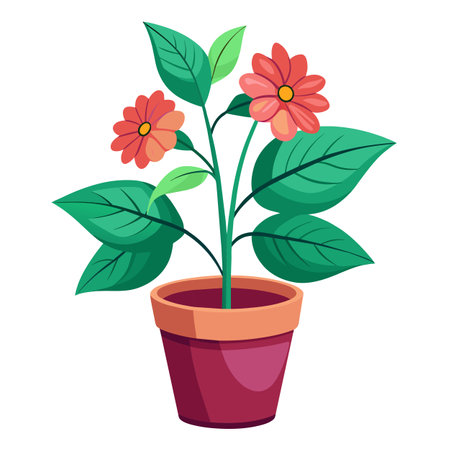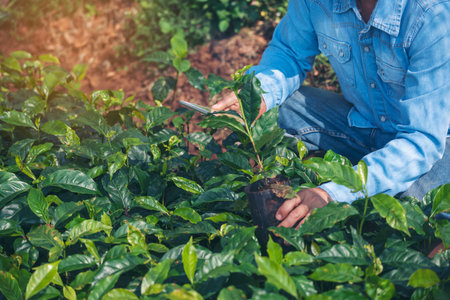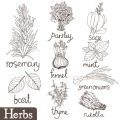1. Understanding Seasonal Climate Patterns
When it comes to gardening, timing truly is everything. The United States spans multiple climate zones, each with its own unique seasonal patterns. Understanding these differences is the first step toward planning a successful garden that maximizes your harvest and keeps costs low.
Why Climate Zones Matter
Different plants thrive in different conditions. Some love the heat and long days of summer, while others prefer the cooler temperatures of spring or fall. By learning about your local climate zone, you can choose the right crops and plant them at the right time—helping you work with nature instead of against it.
USDA Hardiness Zones: A Gardener’s Guide
The USDA Plant Hardiness Zone Map divides North America into 13 zones based on average annual minimum winter temperatures. Each zone covers a 10°F range and helps gardeners know what perennials will survive year-round in their area.
| Zone | Average Minimum Temperature (°F) | Typical Regions |
|---|---|---|
| 3-4 | -40 to -20°F | Northern states like Minnesota, North Dakota, parts of Montana |
| 5-6 | -20 to 0°F | Midwest states, parts of Northeast like Ohio, Pennsylvania |
| 7-8 | 0 to 20°F | Southeast states like Georgia, North Carolina, parts of Texas |
| 9-10 | 20 to 40°F | Southern California, Florida, southern Texas |
| 11+ | Above 40°F | Tropical areas like South Florida and Hawaii |
Seasonal Shifts Across the U.S.
The growing season varies widely across the country. In warmer zones like Florida (Zone 10), you might grow vegetables nearly year-round. Meanwhile, gardeners in Montana (Zone 3) have a much shorter window between late spring and early fall.
Examples by Region:
- Northeast (Zones 5-6): Start seeds indoors in late winter; transplant hardy veggies in early spring.
- Southeast (Zones 7-8): Grow cool-weather crops in fall and winter; heat-loving plants in late spring.
- Pacific Northwest (Zones 7-8): Mild summers are great for leafy greens; root vegetables thrive in fall.
- Southwest (Zones 9-10): Take advantage of mild winters; avoid peak summer heat for tender crops.
- Midwest (Zones 4-6): Focus on summer crops; use cold frames or greenhouses to extend seasons.
By aligning your planting calendar with the natural rhythm of your region’s seasons, you’ll reduce water usage, lower pest issues, and see better yields—all while saving money on replacements and failed crops.
2. Spring Planting: Seizing the Growing Momentum
Spring is when your garden truly wakes up, and it’s the perfect time to kick off the growing season. Timing your spring tasks just right can make a big difference in how much you harvest and how much you spend along the way. From prepping your soil to choosing the right crops and using smart tools like cold frames or row covers, here’s how to get the most out of your spring garden.
Early Spring: Get Ready Before You Plant
As soon as the ground is workable and frost risk starts to drop, its time to prep. Early spring is ideal for:
- Soil preparation: Clear debris, add compost, and test pH levels.
- Seed starting indoors: Begin warm-season crops like tomatoes and peppers inside.
- Planting cool-weather crops: Direct sow spinach, lettuce, peas, radishes, and kale outdoors.
Best Crops for Early Spring
| Crop | Direct Sow or Transplant | Cold Tolerance |
|---|---|---|
| Lettuce | Direct Sow | High |
| Spinach | Direct Sow | Very High |
| Kale | Transplant or Direct Sow | Very High |
| Peas | Direct Sow | High |
| Broccoli (starts) | Transplant | Moderate-High |
Mid to Late Spring: Transition into Warm Season Planting
As temperatures rise and frost risk disappears (typically after your local last frost date), its time to plant warm-season crops directly or transplant your indoor seedlings outside.
- Warm-season transplants: Tomatoes, peppers, eggplants.
- Sow directly outdoors: Beans, corn, cucumbers, squash.
- Add mulch: Help retain moisture and suppress weeds as days get warmer.
Crops to Plant After Last Frost Date
| Crop | Sow/Transplant Method | Notes |
|---|---|---|
| Corn | Direct Sow | Sow in blocks for better pollination |
| Cucumbers | Direct Sow or Transplant | Loves warm soil; wait until its at least 60°F (16°C) |
| Zucchini/Squash | Direct Sow or Transplant | Mature quickly; stagger planting for longer harvests |
| Tomatoes (starts) | Transplant Only | Add support cages or stakes early on |
Extending the Season with Cold Frames & Row Covers
If youre eager to start earlier or protect tender plants from late frosts, season extension tools are key. Both cold frames and row covers trap warmth and shield plants from wind and cold snaps.
Cold Frames vs. Row Covers: Whats Best?
| Tool | Description | Best Use Case |
|---|---|---|
| Cold Frame | A box with a transparent lid that captures sunlight and warmth. | Starting seedlings outdoors early or hardening off transplants. |
| Row Cover (Floating) | A lightweight fabric laid over plants directly or on hoops. | Adds a few degrees of protection; ideal for covering rows of greens. |
The momentum of spring is powerful—catch it at the right time, and you’ll set yourself up for an abundant season ahead. By matching your planting schedule with nature’s rhythm and using a few simple techniques, you’ll grow more while spending less.

3. Summer Strategies: Productivity and Preservation
Summer is when your garden reaches its peak potential, but it also brings challenges like intense heat and water stress. With smart planning and care, you can keep your garden thriving all season long while keeping costs down.
Managing Peak Growth
During summer, plants grow rapidly—especially warm-season crops like tomatoes, peppers, squash, and corn. Its important to stay on top of pruning, staking, and harvesting to avoid overcrowding and disease.
Quick Tips for Peak Season Maintenance:
- Prune regularly: Remove dead or crowded branches to promote airflow.
- Stake or cage plants: Support heavy fruit-bearing crops like tomatoes and cucumbers.
- Harvest frequently: Picking ripe produce encourages more growth and prevents waste.
Irrigating During Heat Waves
Hot, dry weather can quickly dehydrate your garden. Efficient irrigation not only conserves water but also helps maintain healthy plant growth.
Best Times to Water:
| Time of Day | Why It Works |
|---|---|
| Early Morning (5–9 AM) | Water soaks in before evaporation starts; leaves dry out by midday to prevent disease. |
| Late Afternoon (after 5 PM) | If mornings are missed, late afternoon is acceptable—but avoid watering too late to reduce fungal risks. |
Irrigation Tips:
- Use mulch: Helps retain soil moisture and keeps roots cool.
- Drip irrigation or soaker hoses: Deliver water directly to roots with minimal waste.
- Avoid overhead watering: It increases evaporation and promotes leaf diseases.
Succession Planting for Continued Harvests
If youre only planting once per season, youre likely missing out on extra yields. Succession planting means replanting quick-maturing crops throughout the summer to keep your garden productive.
Examples of Succession Crops:
| Crops | Days to Maturity | Successive Plantings Possible? |
|---|---|---|
| Lettuce | 30–50 days | Yes, every 2–3 weeks until late summer |
| Bush Beans | 50–60 days | Yes, every 3 weeks through midsummer |
| Zucchini | 45–55 days | Yes, staggered plantings keep supply steady |
Tips for Planning Successions:
- Create a planting calendar: Mark replanting dates based on crop maturity timelines.
- Add compost between cycles: Refresh soil nutrients to support new growth.
- Select heat-tolerant varieties: Especially important for leafy greens in hot climates.
A well-timed summer garden isnt just about keeping things alive—its about maximizing your harvest with smart strategies that match the seasons demands. Stay ahead of the heat and make the most of every growing day!
4. Fall Gardening: Second Harvests and Soil Building
Fall gardening is a great way to extend your growing season and get the most out of your garden space. As summer crops wind down, cooler temperatures create ideal conditions for a second round of planting. With a little planning, you can grow cool-season vegetables while also setting up your soil for success in the next cycle.
Cool-Season Crops to Plant in Fall
Some vegetables actually prefer the cooler temperatures of fall. These crops not only thrive as the weather cools but can often taste better after a light frost. Heres a list of popular cool-season vegetables to consider:
| Vegetable | Days to Maturity | Planting Tips |
|---|---|---|
| Spinach | 35–45 days | Plant in late summer for fall harvest; tolerates light frost |
| Kale | 50–65 days | Tastes sweeter after frost; direct sow or transplant |
| Radishes | 20–30 days | Fast-growing; succession plant for continuous harvests |
| Lettuce | 30–60 days | Choose cold-tolerant varieties; partial shade helps in warmer zones |
| Broccoli | 60–80 days | Start indoors mid- to late-summer; transplant when temps cool |
Timing Your Fall Garden Right
The key to successful fall gardening is timing. Youll want to count back from your areas first expected frost date to determine the best time to plant each crop. Add about 1-2 weeks as a buffer for slower growth in cooler weather.
How to Calculate Your Planting Dates:
- Find your average first frost date (check the USDA hardiness zone map or local extension office).
- Look at the “days to maturity” listed on your seed packet.
- Add 7-14 extra days for slower growth in fall conditions.
- Subtract that total from your frost date — that’s your last safe planting date.
Soil Management Strategies for Fall
Fall isn’t just about harvesting — it’s also prime time to care for your soil. Healthy soil now means better yields later. Here are two key practices:
Composting
Add kitchen scraps, yard waste, and old plant material to your compost pile. Turning compost regularly helps it break down faster, creating nutrient-rich organic matter that can be added back into your beds before winter hits or early spring planting.
Cover Cropping
Sow cover crops like clover, rye, or hairy vetch after you pull out spent plants. These crops protect against erosion, fix nitrogen in the soil, and improve structure when turned under before spring planting.
Popular Cover Crops and Their Benefits:
| Cover Crop | Main Benefit |
|---|---|
| Clover | Nitrogen fixation and weed suppression |
| Cereal Rye | Erosion control and organic matter boost |
| Hairy Vetch | Nitrogen fixer and good ground cover over winter |
| Buckwheat (early fall) | Quick-growing weed suppressor; attracts pollinators if allowed to flower |
A well-planned fall garden keeps your beds productive longer and prepares your soil for bigger, healthier harvests next year. With just a bit of effort now, you’re investing in both short-term rewards and long-term success.
5. Winter Planning: Reflection, Maintenance, and Preparation
While winter might seem like a gardening off-season, it’s actually one of the most valuable times for setting yourself up for a productive and cost-effective year ahead. With your garden resting, use this quieter season to reflect on what worked, perform necessary maintenance, and plan smartly for spring.
Reflect on Last Seasons Successes and Challenges
Grab a notebook or open a garden journal app and jot down what went well this past year. Did your tomatoes thrive? Were pests a problem in your kale bed? Think about planting dates, varieties that performed best, and areas that could use improvement. This reflection helps you avoid repeating mistakes and build on your successes.
Reflection Checklist
| What to Review | Why It Matters |
|---|---|
| Plant Varieties | Identify high-yield or disease-resistant options |
| Pest & Disease Issues | Plan for crop rotation or natural pest control next season |
| Soil Quality | Determine if compost or amendments are needed |
| Irrigation Efficiency | Look for ways to conserve water or improve coverage |
Tool and Infrastructure Maintenance
This is the perfect time to clean, repair, or replace gardening tools. Sharp pruners and hoes make gardening easier and more effective come spring. Check irrigation systems, trellises, raised beds, and fencing. Small repairs now can save you money later—and reduce stress when the growing season begins.
Winter Maintenance To-Do List
- Clean and oil tools: Prevent rust and extend tool life.
- Sharpen blades: Pruners, shears, and shovels work better sharp.
- Tune up lawn equipment: Get mowers and trimmers ready ahead of time.
- Inspect garden beds: Look for rot or damage in wood frames.
Create Your Next Season Game Plan
A little planning now can lead to bigger harvests with lower costs. Use seed catalogs and online resources to select crops that fit your climate zone. Sketch out a garden layout that rotates crops from last year’s spots to keep soil healthy. Also consider succession planting schedules so you can maximize each square foot throughout the year.
Budget-Friendly Planning Tips
- Create a planting calendar: Know when to start seeds indoors or direct sow based on your USDA zone.
- Select multi-purpose plants: Grow veggies that offer multiple harvests (like kale or Swiss chard).
- Sow from seed instead of buying starts: Saves money in the long run.
The more you prepare during winter, the smoother your growing season will be—leading to better yields with less waste and cost.


